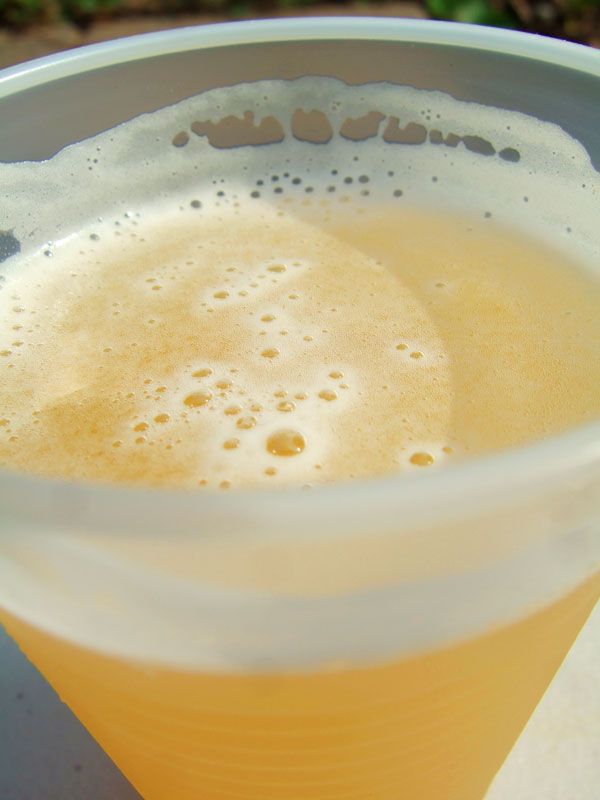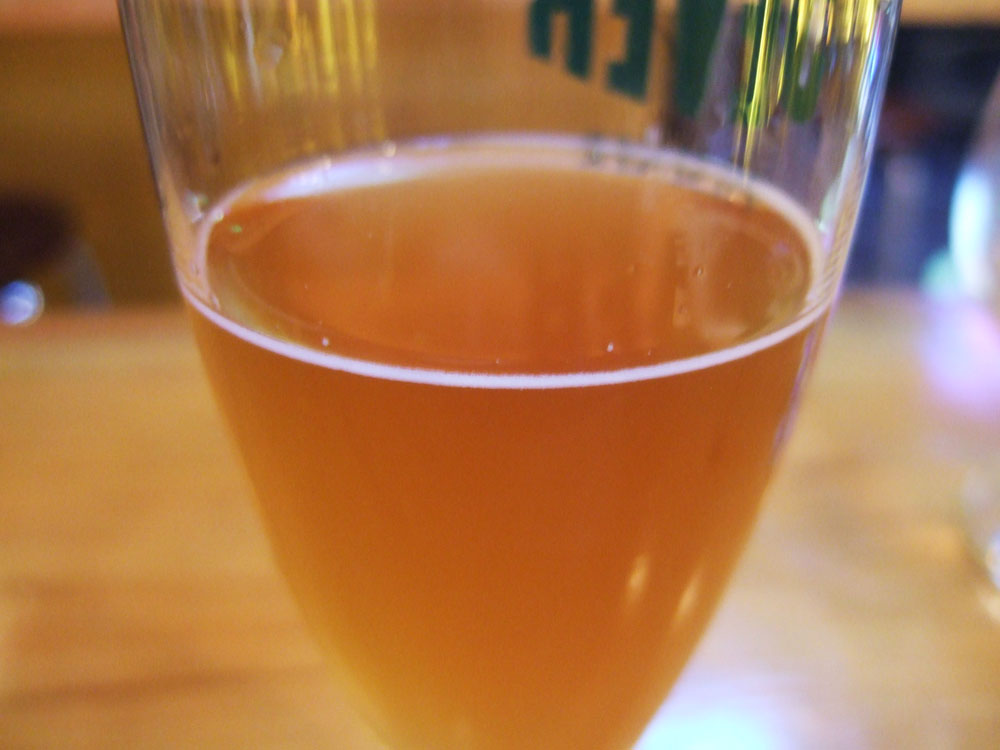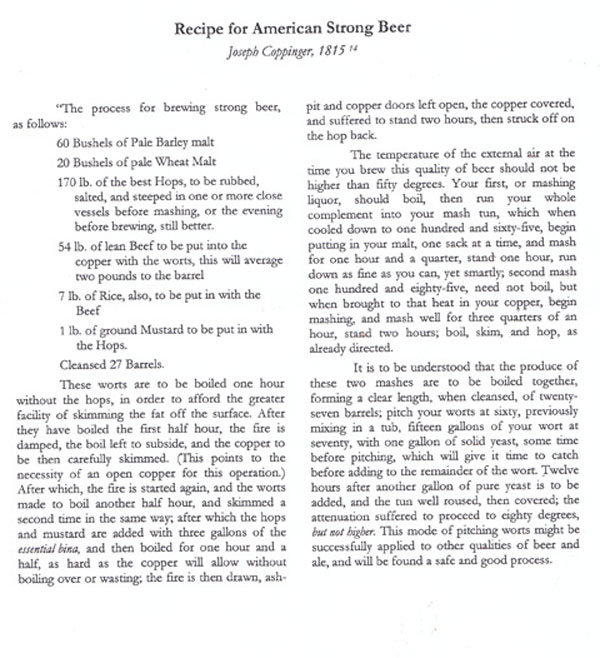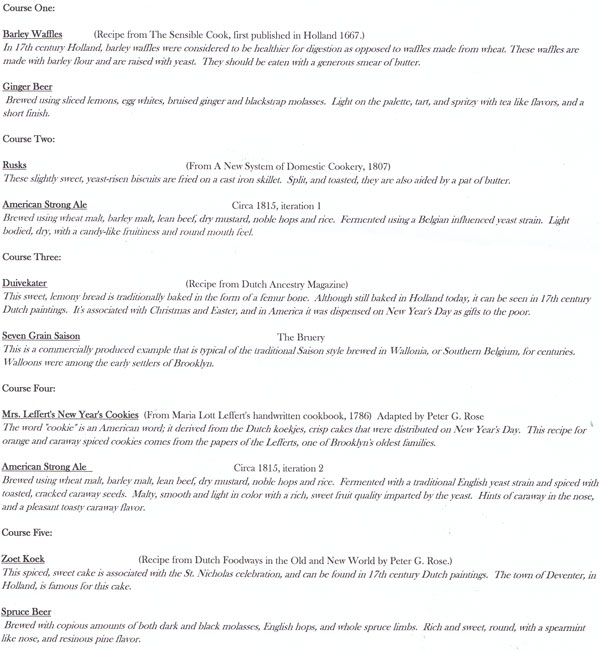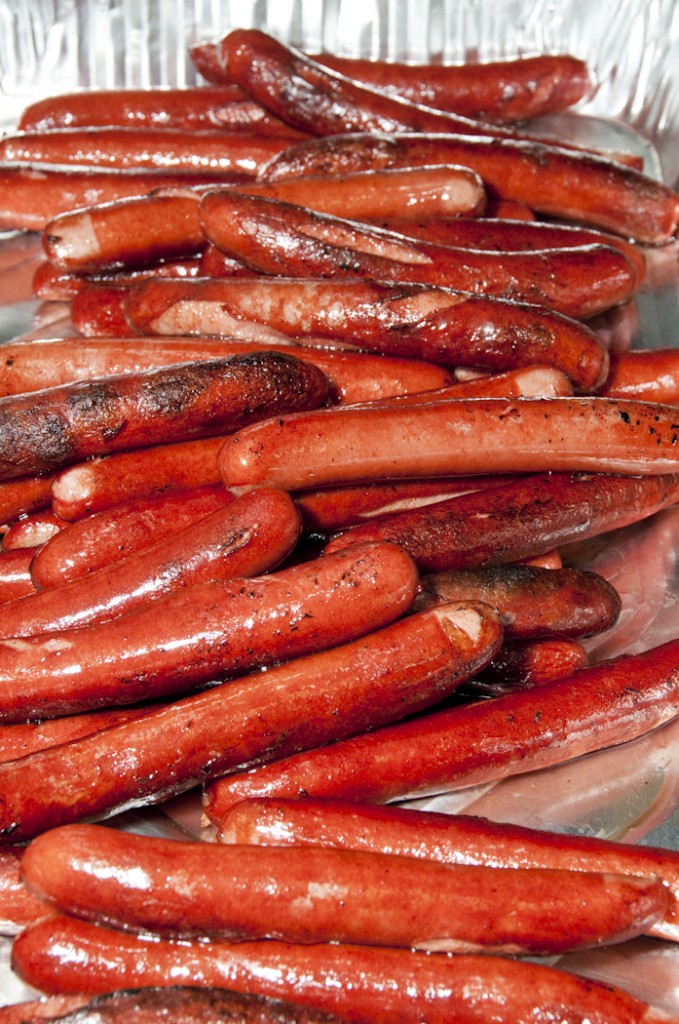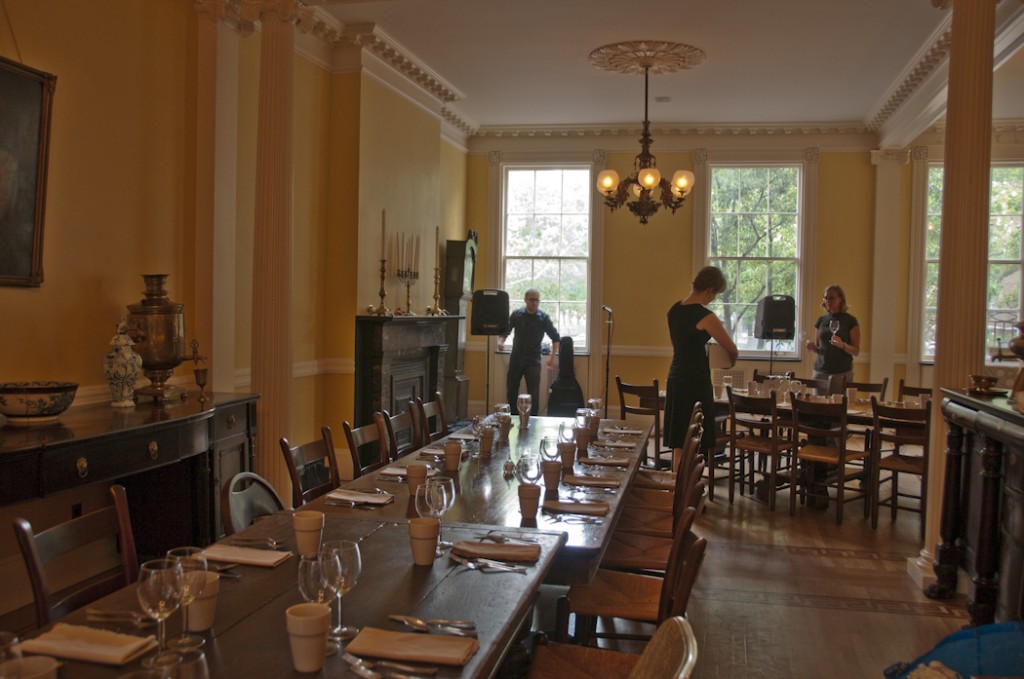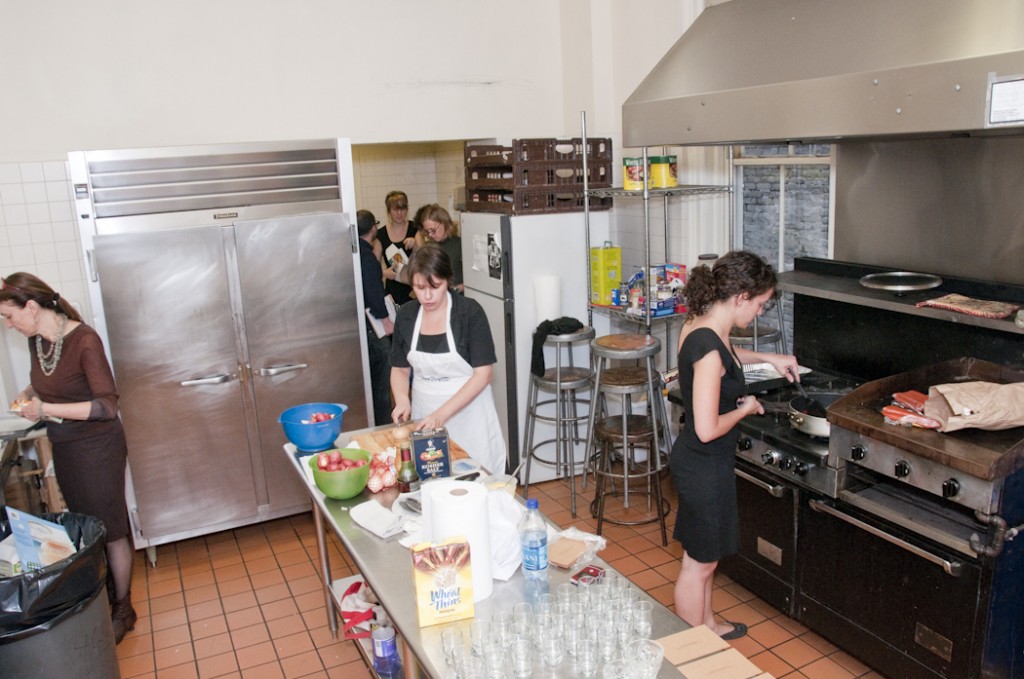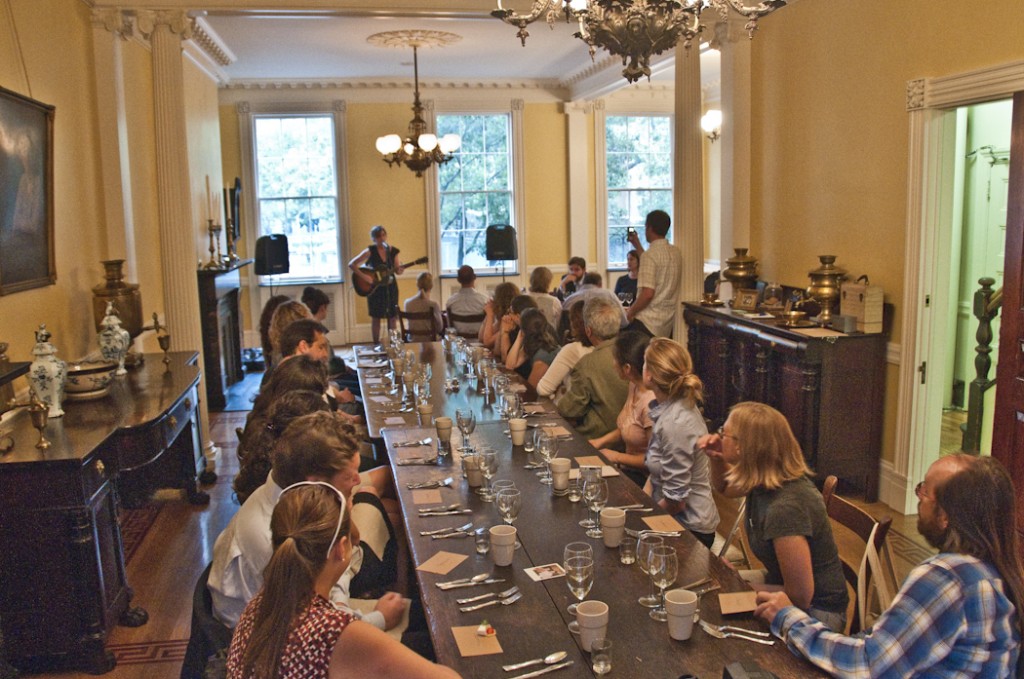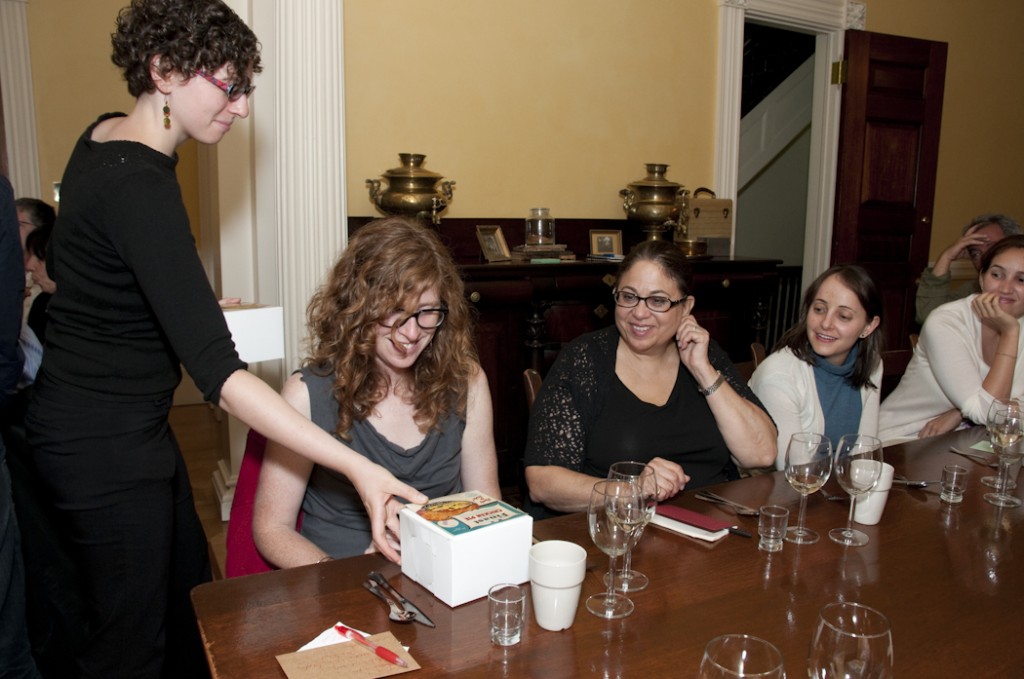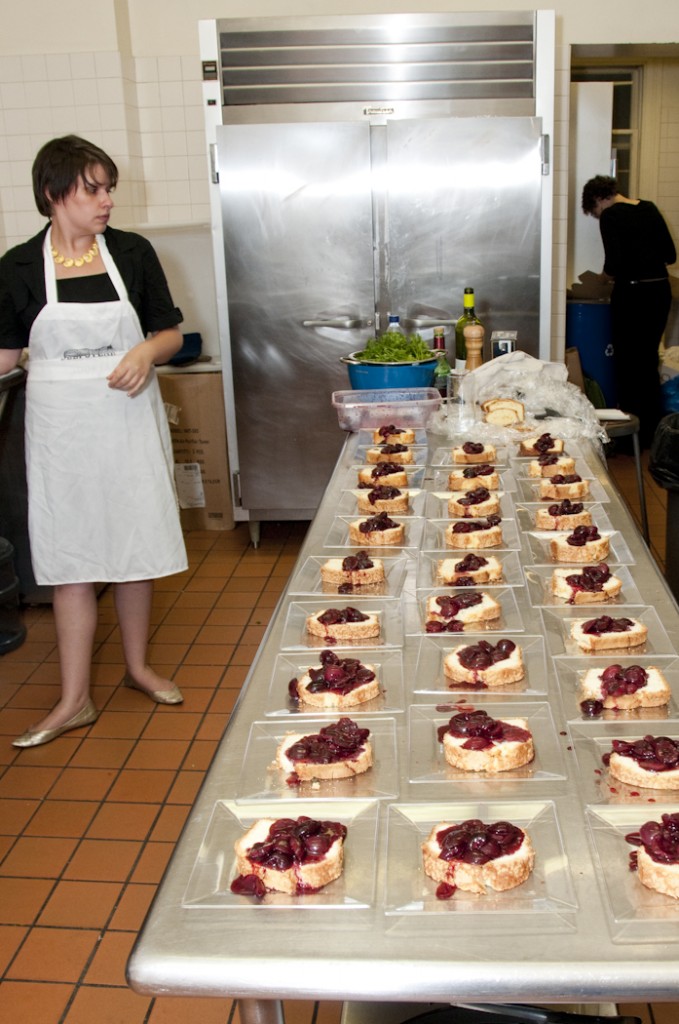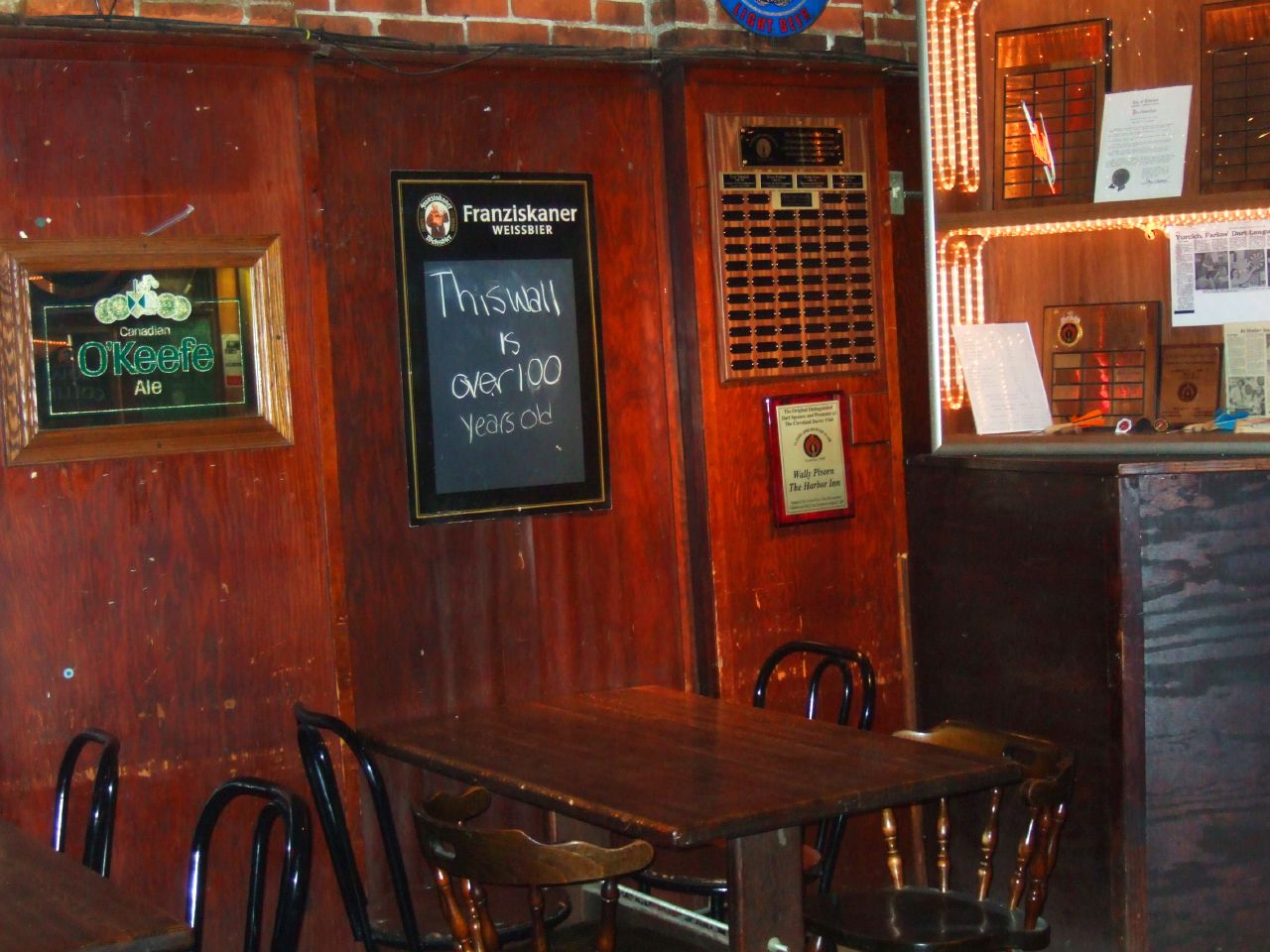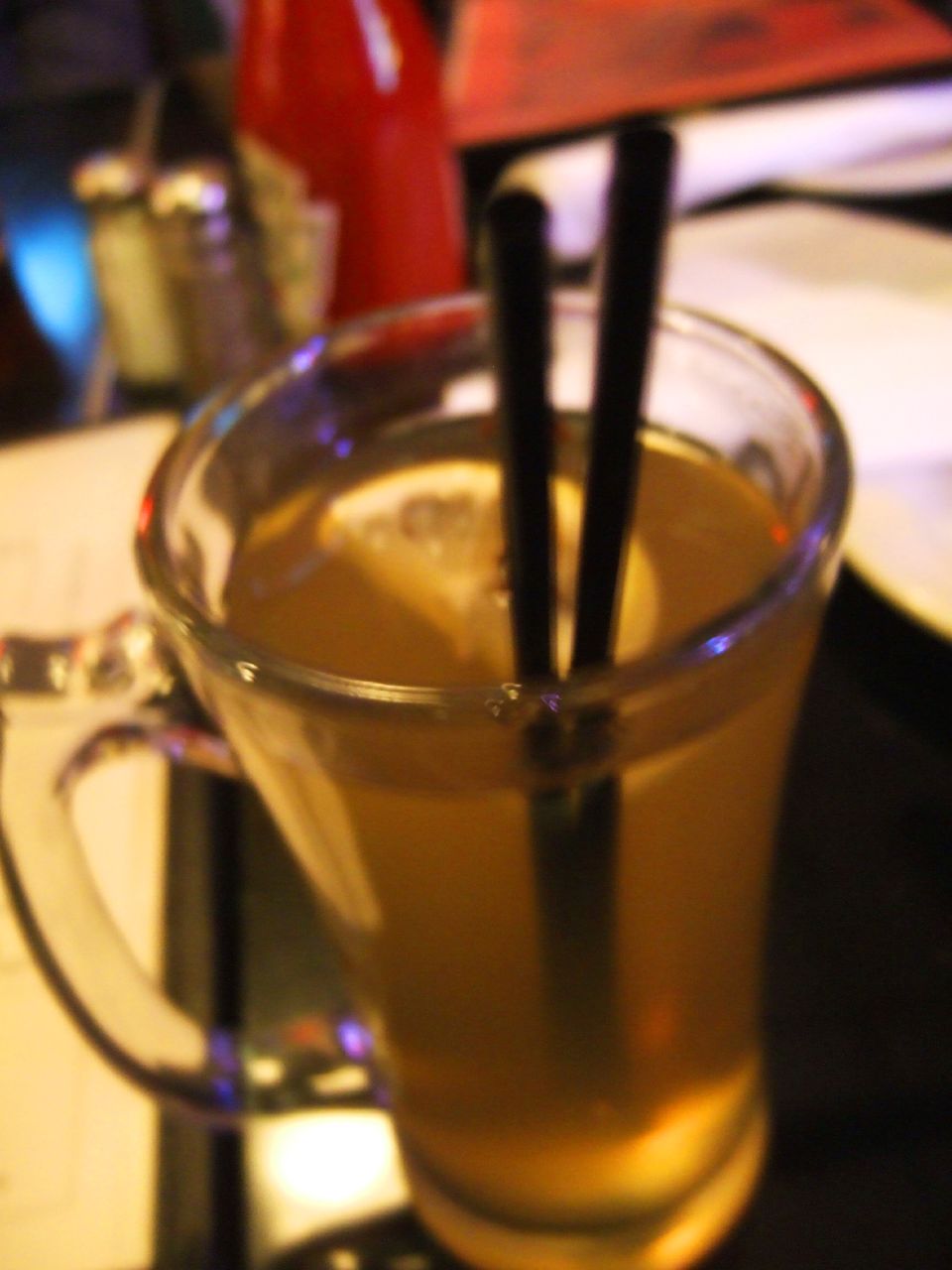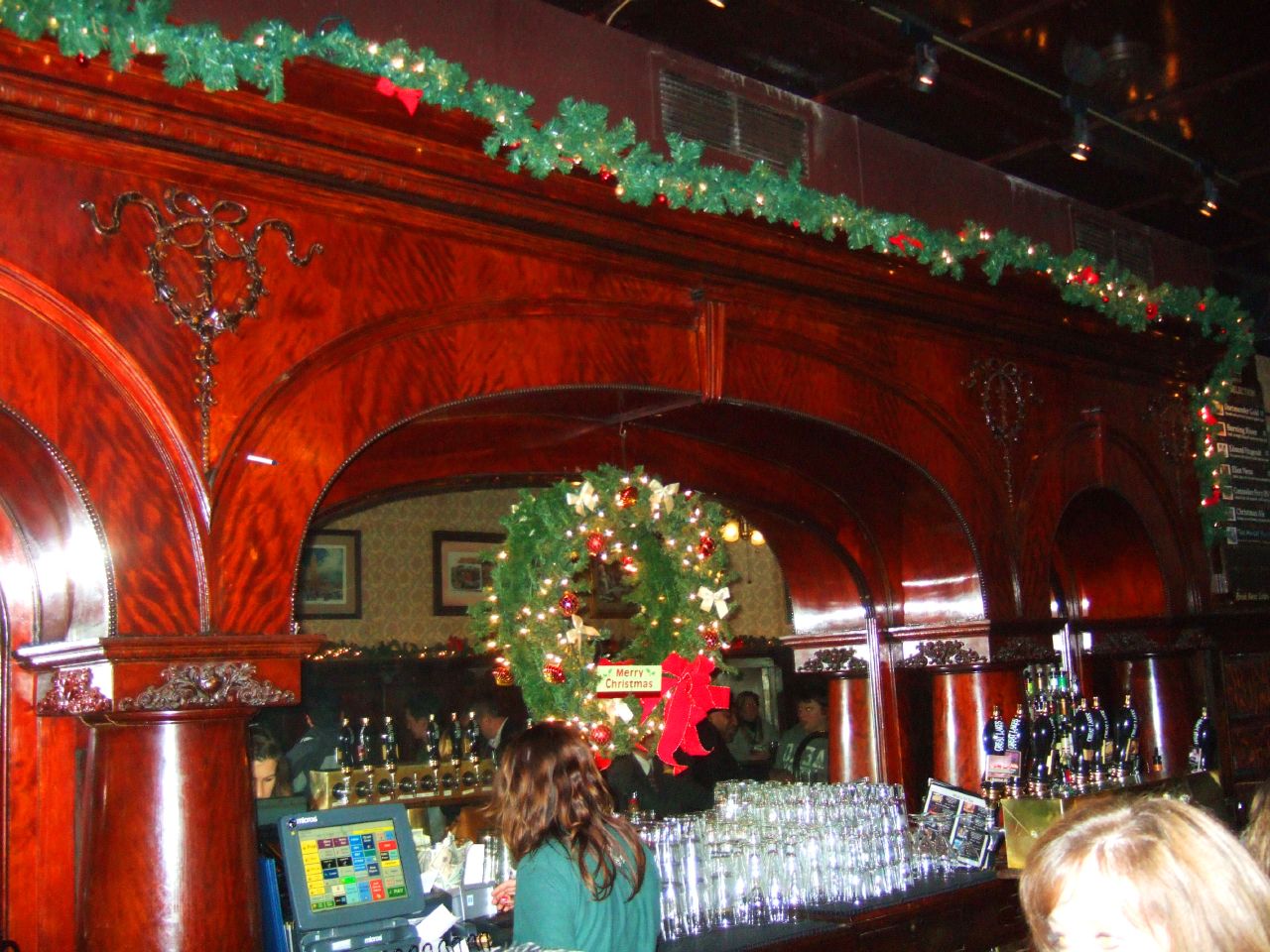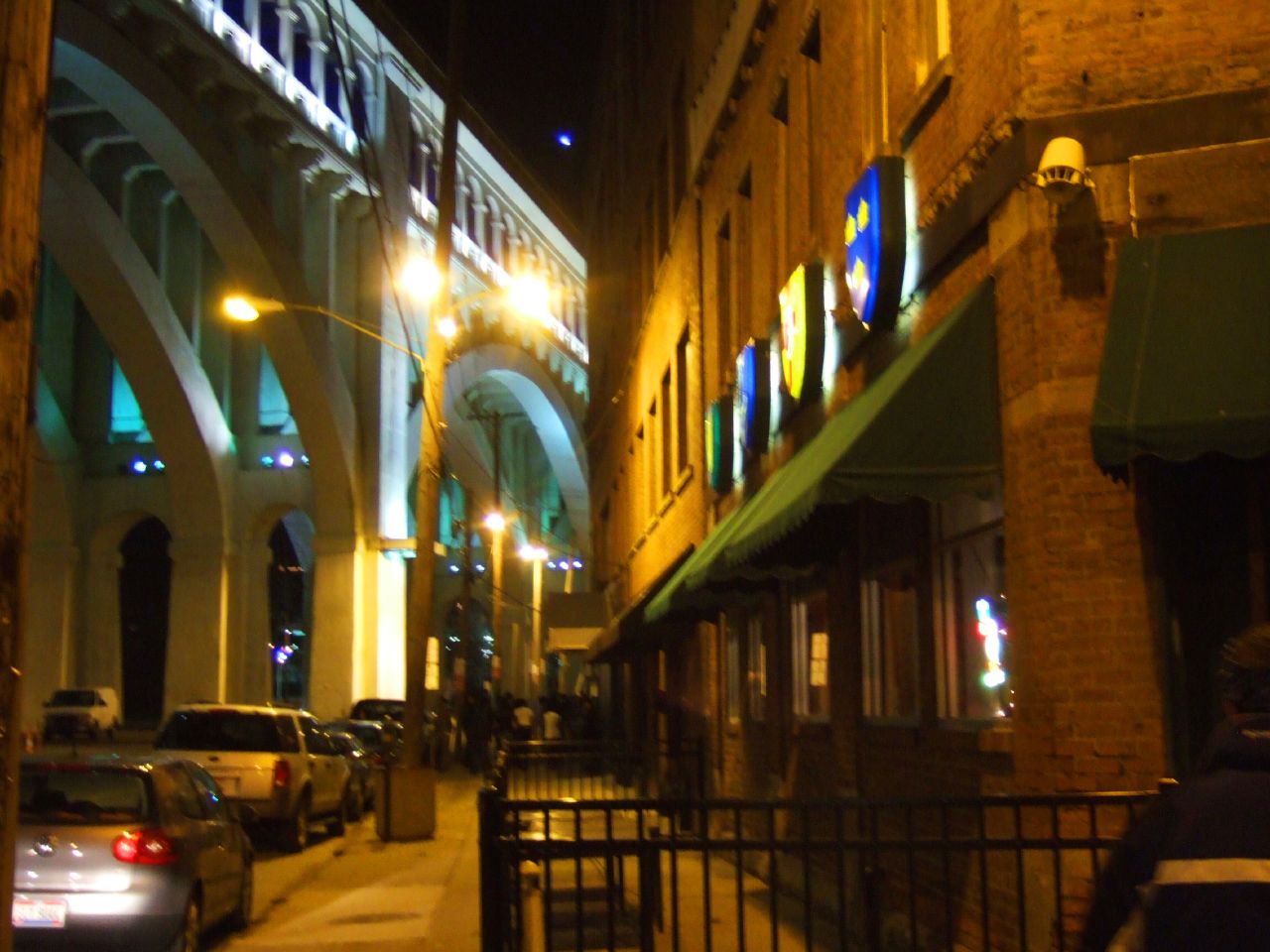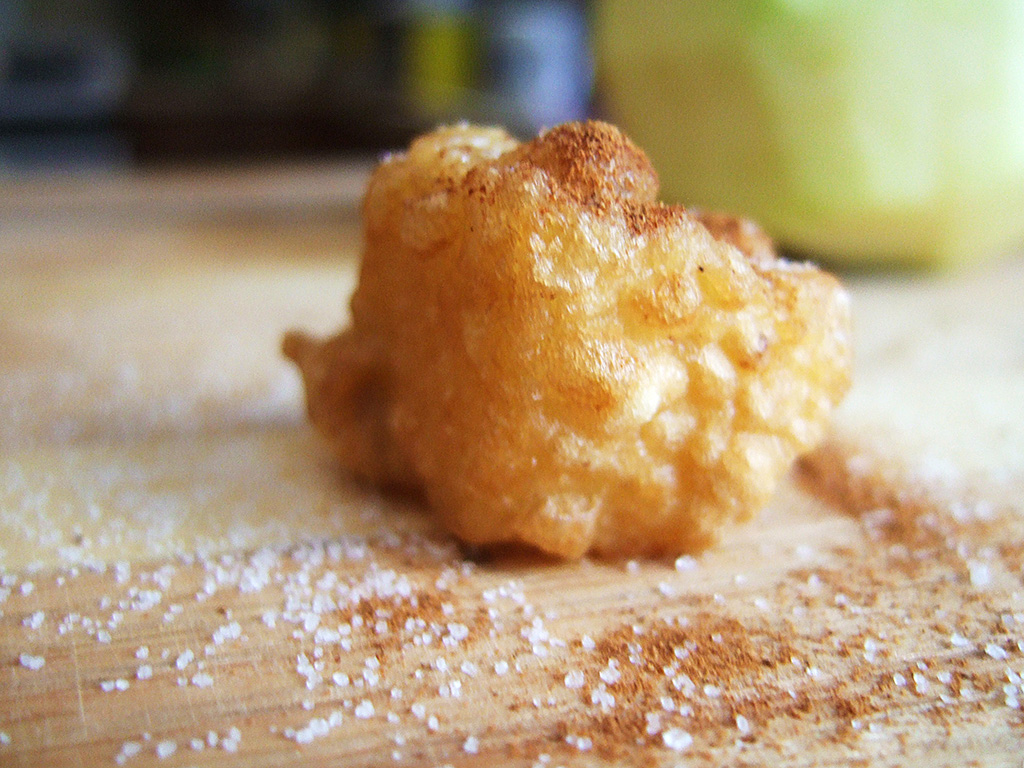 One little fritter.
One little fritter.
Fried. Apples. Beer. This recipe appealed to me for obvious reasons. But, interestingly, it also goes along with the medieval theme of my last dinner party. Read on for Mrs. Washington’s link to Queen Elizabeth.
The History
Martha Washington’s Booke of Cookery and Booke of Sweetmeats, the source for this recipe, is not a collection of Martha’s own recipes: they were transcribed by an unknown person in the 17th century and were given to her during her first marriage to Daniel Custis in 1749, perhaps as a wedding present. Â Widowed at 25, she was Martha Custis until she met George, and together they raised Martha’s two children from her previous marriage; and later, two orphaned grand-children. Interestingly, Martha gave birth to no more children during her marriage to George.
The cookbook was passed down to one of the Custis grandchildren and the recipes themselves had likely been a family heirloom for generations before. Food historian Karen Hess writes “Many of the recipes must have seemed old-fashioned to Martha…the cuisine of the manuscript is that of Elizabethan and Jacobean England.” That’s the 1550s-1620s, which means many of these recipes are considered to be part of a late-medieval mode of cooking.
Put yourself in Martha’s shoes and imagine trying to make dinner from a 200-year-old cookbook. So who can say if Mrs. Washington ever cooked any of the recipes in this manuscript, but some of them definitely seem a bit more modern than others.  Take, for example, the two recipes for apple fritters: one combines nutmeg, clove, ginger, mace, cinnamon, saffron and rosewater–a startling amount of spices much more reminiscent of the Forme of Cury than a modern recipe.  But the other fritter only calls for nutmeg, cloves, and mace–and a little cinnamon sugar strewn on top. Simpler, its likely a later addition to the recipe collection.
The more modern fritter recipe also contains ale, probably added to make the batter light with yeast and carbonation. A beer-battered, fried apple sounded pretty fucking good to me, so I decided to give this recipe a shot.
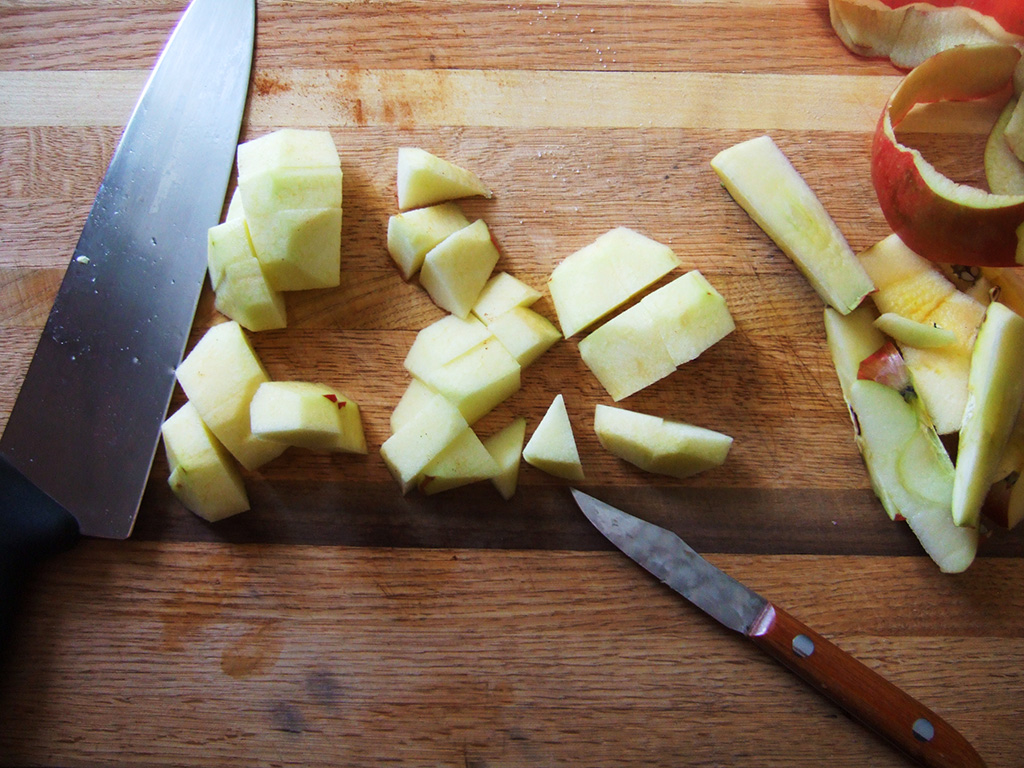 Cut yr apples about yay big.
Cut yr apples about yay big.
The Recipe
To Make Fritters
Take a pint of very strong ale, put into it a little sack & warm it in a little scillet; then take 8 youlks of eggs & but 2 whites, beat them very well; yn put to them a little flowre & beat them together, yn put in yr warme ale; you must put noe more flowre to ye eggs after ye ale is in. Yr batter must be noe thicker then will just hang on ye apples. Season batter with ye powder of nutmegg, cloves, and mace; then cut your apple into little bits & put them into ye batter; yn set on ye fire a good quantity of tryed suet or hoggs lard, & when it is very hot drop in yr apples one by one with yr fingers as fast as you can. When they are fryde, lay ym on a cleane cloth put over a cullender, yn lay ym on trencher plates, & strow on ym sugar & cinnamon.
Ale & Apple Fritters
Adapted From Martha Washington’s Booke of Cookery and Booke of Sweetmeats
1 large egg + 2 yolks
1/2 cup flour
1/4 teaspoon salt
1/2 cup ale (I used Guinness, it’s what I had on hand)
1 tablespoon brandy
1/2 tsp nutmeg
1/2 tsp mace
1/8 tsp clove
4 med-large cooking apples
Oil for frying
In the microwave, warm beer one minute on high. With a fork, whisk together eggs, flour and salt. Add beer and brandy, and mix until blended. Add spices. Set aside in a warm place from 30-60 minutes.
Meanwhile, peel and pair the apples, slicing them into one-inch chunks. Heat oil for frying: you can use lard in a cast iron pan, like the original recipe suggests, or vegetable oil in a FryDaddy, like I did.
Put apple pieces into the batter, mixing them to coat. Drop into hot oil using your fingers or a spoon. Fry until golden brown, turning once. Remove into a colander lined with paper towels, over a plate. Allow to cool slightly, then sprinkle with sugar and cinnamon. Toss fritters in the colander to coat, then serve.
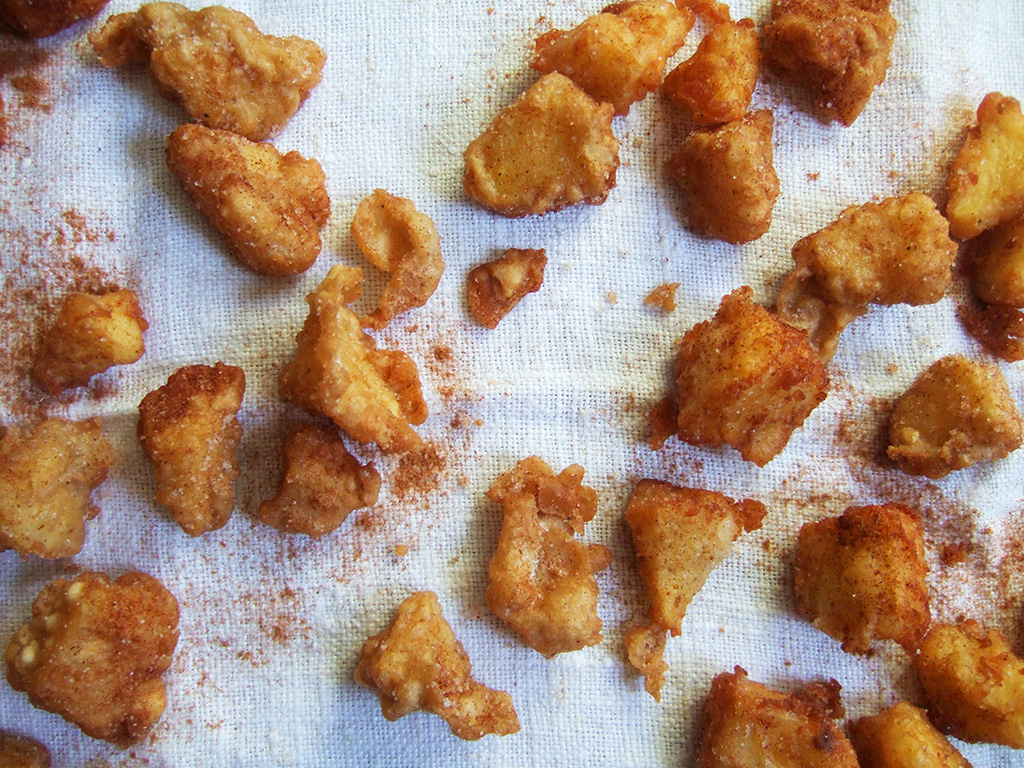 Strown with cinnamon and sugar!
Strown with cinnamon and sugar!
The Results
The results were unexceptional. Technically, the recipe came out well: the apples slices were cooked, the coating thin but crispy. But the fritter batter was almost flavorless, and there was no satisfying contrast between the apples and the coating. Â There was nothing interesting going on with the taste or the texture. Perhaps I should have fried them in lard.
I’m disappointed since it seemed like this recipe had a lot of potential. Â What do you all think? How can this fritter recipe be improved?

